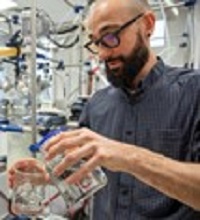“Calcium phosphates and engineering innovation for large bone defects”
Dr David MARCHAT
Mines Saint-Etienne, Univ Lyon, Univ Jean Monnet, INSERM, U 1059 Sainbiose, Centre CIS, F - 42023 Saint-Etienne
Abstract
The reconstruction of large bone defects resulting from trauma, infection or tumour resection remains a significant clinical issue. The current approaches include autografts, allografts or synthetic biomaterials but none of them are really satisfactory. Among biomaterials, calcium phosphate bioceramics (CaP), especially hydroxyapatite and b-tricalcium phosphate, have been implanted clinically for more than 30 years. Unfortunately, these CaP accept new bone ingrowth but only in small volume (» 1 cm3) and exhibit a limited ability to induce bone formation and vascularization into the implant. A new generation of “bio-instructive” CaP ceramics is needed to meet the economic, social and surgical needs in the years to come. It means that the implant needs to be more than a support for tissue ingrowth, it must promote and stimulate it or regulate stem cell activity [1]. In this context, a personalized approach is required, i.e., the development of a unique and optimized solution for each clinical case (e.g., bone tissue engineering strategy, implant design). Overall, this application-driven approach involves a holistic strategy and radical changes in the way we design and produce CaP bioceramic scaffolds [2].
[1] Marchat D., Champion E.; Chapter 8 in Advances in ceramic biomaterials medical, Elsevier, 2017, http://dx.doi.org/10.1016/B978-0-08-100881-2.00008-7 .
[2] Charbonnier B., Hadida M., & Marchat D.; Additive manufacturing pertaining to bone: Hopes, reality and future challenges for clinical applications, Acta Biomaterialia, 2021, https://doi.org/10.1016/j.actbio.2020.11.039
3 parvis Louis Néel - 38000 Grenoble
Accès : TRAM B arrêt Cité internationale
2ème étage - LMGP



